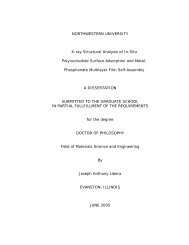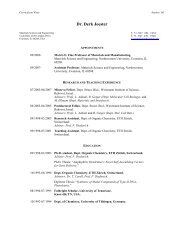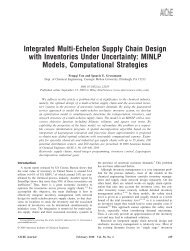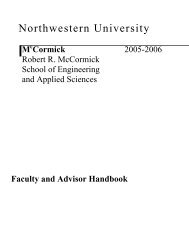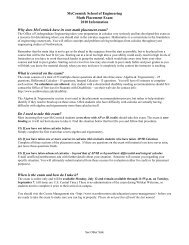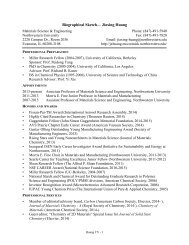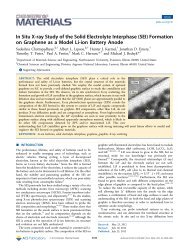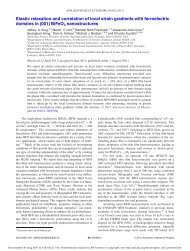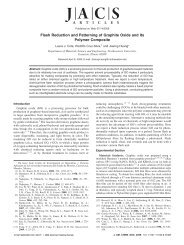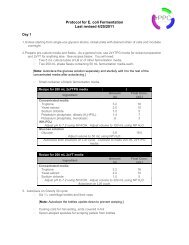Community-Based Operations Research - Humanitarian Logistics
Community-Based Operations Research - Humanitarian Logistics
Community-Based Operations Research - Humanitarian Logistics
Create successful ePaper yourself
Turn your PDF publications into a flip-book with our unique Google optimized e-Paper software.
Johnson and Smilowitz: <strong>Community</strong>-<strong>Based</strong> <strong>Operations</strong> <strong>Research</strong>110 Tutorialsin <strong>Operations</strong><strong>Research</strong>, c○ 2007 INFORMS2.1. Analytic Methods2.1.1. Quantitative Methods. We know of no conventional quantitative modelingmethods from OR/MS that cannot be applied to community-based OR problems. We drawattention to Erlenkotter’s [23] examination of an extension of the uncapacitated fixed-chargefacility location models to account for price-sensitive demands. He shows that a conventionalprivate-sector objective of profit maximization is equivalent to marginal-cost pricing,whereas a public-sector objective of total social benefit maximization yields revenues thatdo not cover total costs. A “quasi-public” variant of this problem ensures nonnegative profits.This analysis reinforces our emphasis on community-based OR models that attempt tojointly optimize measures of equity and social welfare. The latter objective, moreover, isgenerally not equivalent to profit maximization.2.1.2. Qualitative Methods. Qualitative methods provide a valuable complement totraditional approaches. UK-style community OR draws heavily from methods such as “softsystems methodology” (see e.g., Checkland [19]) that focus on systems analysis and qualitativemethods for learning about the problem. <strong>Community</strong>-based OR, in addition, accommodatesmethods such as “value-focused thinking” (Keeney [56]) that assists modelers informulating decision problems that are closely aligned with stakeholder values and amenableto analytical methods that yield specific prescriptions.2.2. Human Services2.2.1. Senior Services. Bartholdi et al. [9] develop a heuristic vehicle-routing strategyfor home-delivered meals (HDM, i.e., meals on wheels) that can be easily implementedby the resource-constrained organization using earlier work on space-filling curves. Wongand Meyer [96] use geographic information systems (GIS) to locate HDM kitchens anddesign delivery routes to minimize total travel distance. Gorr et al. [28] develop an interactive,optimization-based spatial decision support system (SDSS) for HDM kitchen location,catchment area design, and vehicle routing for the needs of nonprofit managers seekingincremental or dramatic changes to service strategies. Johnson et al. [46] design and implementhierarchical facility location models to locate facilities that provide daytime congregateservices to senior citizens that minimize distance-based costs and maximize utility usingcurrent local data on senior centers and demands for services.2.2.2. <strong>Humanitarian</strong> <strong>Logistics</strong>. Haghani and Oh [34] consider operational transportationproblems for a fixed distribution network and develop a model of the distributionprocess. Jia et al. [38] introduce network design models for large-scale emergency medicalservice in response to terrorist attacks. Balcik and Beamon [7] study distribution networkdesign for relief chains managed by nongovernmental organizations. Campbell et al. [18]explore various objective functions for the local distribution of supplies after a disaster. Toensure equity and efficiency, two objectives are considered: minimizing the maximum arrivalof supplies and minimizing the average arrival of supplies. Beamon and Kotleba [10] designa stochastic inventory control model that determines optimal order quantities and reorderpoints for a long-term emergency relief response.2.2.3. Public Libraries and Literacy. Mandell [63] presents multiple models of equityand effectiveness, and applies them to the problem of book acquisition for public libraries.Francis et al. [25] develop models to assist a large suburban library system to manageits vehicle fleet and optimize operations under budget constraints. The objective functionbalances travel time incurred by the delivery agency and the service benefit to the librariesserved. A similar, smaller interlibrary loan system in Ohio, studied in Min [68], differs fromthe current example in that all libraries are visited daily.



